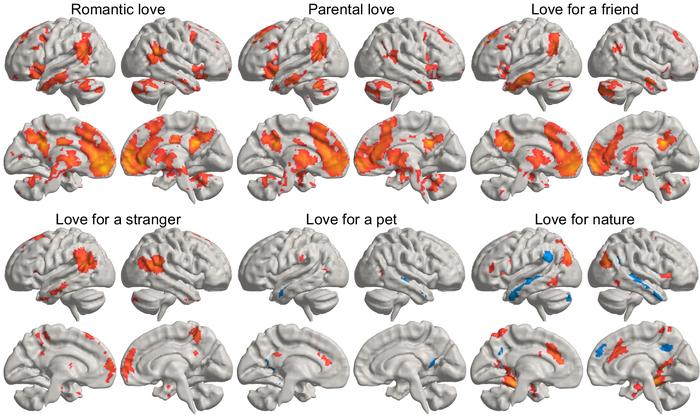A new study by Aalto University delves into the brain’s love map, showing how different types of love light up distinct brain regions. This research could revolutionize our understanding of human emotions and mental health interventions.
In a groundbreaking study, researchers at Aalto University have unraveled the complex neurological tapestry of love, revealing how different forms of this powerful emotion light up various regions of the brain. This promising research, published in the journal Cerebral Cortex, not only sheds light on human emotions but has potential implications for mental health treatments.
“We now provide a more comprehensive picture of the brain activity associated with different types of love than previous research,” Pärttyli Rinne, the philosopher and researcher who coordinated the study, said in a news release.
The study enlisted 55 self-described loving parents and used functional magnetic resonance imaging (fMRI) to observe their brain activity in response to brief narratives related to six different types of love, such as parental love, romantic love and even the love of nature.
Parental love generated the most intense brain activity, closely followed by romantic love, according to the research. This aligns with the notion that our closest relationships are neurologically the most rewarding.

Credit: Pärttyli Rinne et al 2024, Aalto University
Using diverse scenarios, participants were asked to imagine situations, such as seeing a newborn child for the first time or cuddling with a pet. The results indicated that different forms of love activated unique brain regions, such as the basal ganglia and the temporoparietal junction.
The study also found that compassionate love for strangers was less rewarding and caused less brain activation compared to close relationships. Meanwhile, the love of nature prominently activated the brain’s reward system and visual areas but not the social brain areas.
Intriguingly, the research showed distinct brain patterns between pet owners and non-pet owners.
“When looking at love for pets and the brain activity associated with it, brain areas associated with sociality statistically reveal whether or not the person is a pet owner,” Rinne added.
The scientists presented a wide array of simple yet emotionally charged scenarios to participants, and their brain activity was meticulously measured. Examples included imagining the love for a newborn child or the affection for a pet cat sleeping beside them.
Participants were also exposed to neutral scenarios, such as looking out a bus window or brushing their teeth, to control for brain activation unrelated to love. After hearing a professional actor’s rendition of each “love story,” participants imagined each emotion for 10 seconds.
Rinne and his team, composed of researchers Juha Lahnakoski, Heini Saarimäki, Mikke Tavast, Mikko Sams and Linda Henriksson, have previously explored how people physically experience love. Their combined efforts have significantly contributed to our understanding of human emotions.
Beyond merely mapping love’s neural pathways, this research holds promise for practical applications. By understanding the neural mechanisms of love, the study could guide philosophical discussions about the nature of love, consciousness and human connection. Moreover, this enhanced understanding can potentially refine mental health interventions for conditions like attachment disorders, depression and relationship issues.

